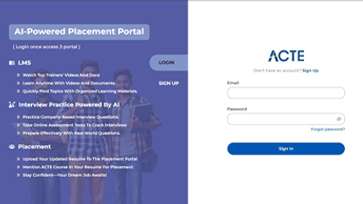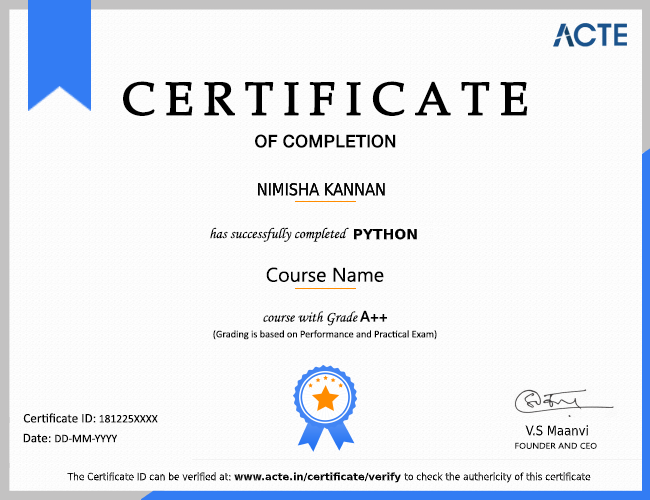Kernel RTOS development Online Course provides basic compiling and linker training, development of GUI applications, core dump analysis, RTOS stages, and error handling, OS configuration, OS-patching, Kernel debugger, with industry specialist teachers. Our Kernel RTOS Development Courses covers all topics for gaining expertise in basics of kernel, linker, application creation of GUI, steps and error management of RTOS, OS repair, console set-up, etc. In addition, Kernel RTOS Development Online Training helps you obtain competence in this broad subject in order to easily fulfill your everyday obligations. The practitioners are provided by our skilled trainers so that they obtain authentic experience. Get instruction from certified mentors on the industry-oriented integrated kernel RTOS development.
Additional Info
About Kernel RTOS :
RTOS stands for Real Time Operating System. It is an App used in real-time programs such as critical medical care, security programs and aviation. This Kernel RTOS Development Online Course post will talk about RTOS (Real Time Operating System) in Embedded System, how it differs from OS, types, how it works, its use, Architecture, Advantage and Evil. RTOS is an efficient system used in real-time systems to detect real-time output without temporary delays. Performing multiple tasks without compromising on short-term synchronization is available by Real Time Operating System (RTOS).
Types of RTOS (Real Time Operating System) :
It is divided into three types. Of course :
- Soft Time System Operating System
- Solid Performance System
1. The Soft-Time Soft System :
In this type of Operating System, system response time is important but not critical to system performance. You have a set deadline but the system can accept a minimum amount of delays. Example: Online trading system, price quote system, etc.
2. Solid Performance System :
In Hard Real-Time Operating Systems the deadline and time that will be used to perform the tasks is specified. It is necessary for the system to respond within the specified timeline otherwise there may be adverse effects. Example: Critical medical care programs, airline programs, etc.
3. Strong Long-Term Performance Plan :
For solid RTOS, the deadline is specified but discarding it does not cause much impact. Example: Multimedia applications.
Real-Time Operating System (RTOS) has two components, namely, "Real-Time" and "Operating System". An operating system (OS) is nothing but a collection of system calls or functions that provide a interface between hardware and application applications. Manages computer resources and applications. The Kernel RTOS Development Online Training typically offers multiple functions, synchronization, interruption and event management, input / output, Inter-task communication, Timers and clocks and memory management. Core OS by Kernel is usually a set of small, highly optimized libraries. Real-time systems are those systems in which system accuracy depends not only on the rational calculation result, but also on the time at which the results are produced.
RTOS is therefore an application that supports real-time applications by providing relevant results in the required timeframe. Basic Structure is similar to a standard OS but, moreover, Kernel RTOS Development Online Course offers ways to allow real-time scheduling of tasks. While real-time applications can increase or decrease performance speed, they can provide more accurate and unexpected time features than a standard OS. RTOS is the key to many embedded applications and provides a platform for building applications. All embedded programs are not designed for RTOS. Embedded programs with simple hardware / code may not require RTOS. Embedded systems with equivalent software applications require some form of configuration, which is why RTOS.
RTOS Features :
More learning and predictability – The schedule should be able to interrupt any activity in the system and provide the resource to the rope that they need most even at the heaviest load.
Thread Most Important – All tasks are provided with a pre-installed level to simplify previous releases.
Inter Task Communication & Synchronization – Many tasks transmit information to each other in a timely manner and ensure data integrity
Most Valuable Asset – RTOS should have a large number of priority levels and should prevent override changes using the critical asset.
Short Latency – Short and pre-defined levels.
Task switching latency – The time required to save the context of the current work and to switch to another job.
Interrupt latency – The time elapsed between the execution of the final command for the interrupted activity and the first command in the interrupt holder.
Interrupt dispatch latency – The time from the last command in the interrupt holder to the next scheduled operation.
The Important Features of Kernel in RTOS Architecture :
The RTOS kernel acts as an abstraction layer between hardware and applications. There are three broad categories of characters :
- Monolithic candle :
Monolithic characters are part of programs that work like Unix like Linux, FreeBSD etc. A monolithic kernel is a single system that contains all the code needed to perform all kernel-related tasks. It runs all basic system services (e.g. process management and memory management, I / O interference management, file system, etc.)
- Microkernel :
It only uses the basic process of communication (messaging) and I / O control. It usually only provides minor services such as memory protection control, Inter process communication and process management. Other functions such as hardware processes are not handled directly by microkernels. Therefore, the smaller characters provide a smaller set of simple hardware extraction. It is more stable than monolithic as the kernel is unaffected even if the servers fail (e.g. File System). Microkernels are part of operating systems such as AIX, BeOS, Mach, Mac OS X, MINIX, and QNX. Njll
- Hybrid Kernel :
Hybrid characters are extensions for microkernels with specific monolithic character traits. Hybrid characters are similar to microkernels, except that they add extra code to the kernel space so that such code can run faster than it would to the user's space. These are part of the operating system like Microsoft Windows NT, 2000 and XP. DragonFly BSD, etc.
- Exokernel :
Exokernels provide good hardware control. It only works with services that protect resources (e.g. tracking ownership, monitoring usage, regaining access to resources, etc.) by providing a low-level interface for library applications and leaving managers in the app.
The main part of the app is called Kernel. Micro-Kernel Architecture is used in Real Time Operating System for configurable operation. Abstraction Layer is provided by Kernel which offers six main types of common services in the app software. Of course :
- Performance Management
- Job Planning
- Synchronization Work
- Memory Management
- Time management
- Disruption Management
- Device I/O management
- Performance Management :
The app is divided into smaller, organized, and consecutive program units known as 'Thread' or 'Task'. This is done to achieve the amount of money included in the Real Time Application. Kernel RTOS Development Online Training Career Management by Kernel includes Real Time Task Creation, termination, change of priorities etc. Job creation involves creating a Task Control Block (TCB) with information about the Task id, more importantly, the Task states ie if the function is in (idle, active, correct, disconnected) state etc.
- Job Planning :
It records the status of each task and determines the most important task, to be performed. Work has already been suspended and the processor is using a very important function.
- Synchronization Work :
It is necessary to transfer data securely from one Job or Thread to another Worker. Activity Sync allows tasks to be shared jointly with resources such as buffers,devices etc.
- Memory management :
Assign memory for each program. There are two types of RTOS Memory Management. Of Kernel RTOS Development Online Course :
1. Stack Management.
2. Heap management.
- Time management :
Scheduling tasks that need to be done on time, there is a need to interrupt from time to time. Hardware Timer is therefore programmed to disrupt the processor. Time disturbance is called a System Tick.
- Disruption Management :
The CPU is notified of any asynchronous event via Interrupt. It is a hardware method that manages an event by providing functions such as defining the Interrupt Handler, creating and removing a service interruption process etc.
- Device I / O management :
Device I / O management helps to provide a uniform framework (API - Application Programmers Interface). It also helps to reach the drivers of a specific hardware device i.e. find the appropriate device for the I / O application.
How RTOS (Real Time Operating System) Works :
Real-Time Operations Requests are made by Real Time Operating System. RTOS allows multiple tasks or programs to run simultaneously depending on their value. Task Scheduler determines which thread will be made. The processor stops the startup function (if any) and performs the most important task you find.
Suppose, a user browses the web and after a few seconds of switching to YouTube Video and within a short time, the user starts listening to the iPodcast. Web browsing is considered
Task 1 : Video on YouTube
Task 2 : and listening to Podcast is thought to be
Task 3 : Switching between these functions is called Multi-Tasking and RTOS provides efficient multi-tasking services.
When the User switches to Task 2, then Task 1 is discontinued and Perform Task 2 as the most important is in Top. Similarly, when a User switches to Task 3, then Task 2 is terminated and task 3. Task Scheduling Unit takes care of these tasks. Inter task communication, Sync, Time management is maintained by RTOS Kernel.
Where is the RTOS (Real Time Operating System) used?
RTOS finds its use in embedded applications due to its accurate real-time data. Some of the major applications are listed below :
- Mobile applications.
- An online trading system.
- Essential Medical Care Programs.
- Airlines and security systems.
- Price quote systems.
- Network and multimedia applications.
- Anti-Lock brake system.
- Flight control systems.
- Calling online.
- Ticket reservations.
- Command management systems.
Roles and Responsibilites :
It is also evident that pro RTOS professionals find the best packages and materials. Companies are in high demand :
- System Administrators
- RTOS Developer
System Administrators :
- Install and configure software and hardware
- Manage network servers and technical tools
- Set up accounts and locations
- Monitor performance and maintain systems according to needs
- Solve problems and issues
- Ensure security by using access controls, backups and fire extinguishers
- Upgrade systems with new releases and models
- Improve staff training technology to new technologies
- Build an internal wiki with technical documents, manuals and IT policies
RTOS Developer :
- Meet with clients, designers, and engineering teams to define technical requirements.
- Design the system design according to project requirements and hardware specifications.
- Software encoding, embedded programs, and program agreements.
- Performing tests on embedded software systems to ensure proper integration
- Troubleshooting embedded programs and error detection, malfunction, or malfunction.
- Active correction, correction, and embedded code updates are used.
- Liaise with design and engineering teams to ensure process compliance.
- Manage project timeline and report any delays or issues to the manager.
- Creating diagnostic reports, technical manuals, and software development documents.
- Keeping the software systems embedded and performing maintenance as needed.
Tools and FrameWorks :
Required Skills :
- Recommended prior to the arrival of C Programming for Embedded Systems
- Familiarity with embedded concepts and system C
- Basic information of embedded processors
- Excellent understanding of digital electronics.
- Good central understanding of basic analog electronics.
- Good C skills in systems.
- At least one Micro- or Microprocessor understanding.
- Most importantly, your thinking and openness to work with your Laptop / PC connected hardware open hardware.
Certification :
After finishing this Kernel RTOS Development Certification Course, you can gather a college graduation certification, which implies you have effectively finished our Accredited Kernel RTOS program from Kernel RTOS with an useful source for utilizing internet cleansers utilizing a minimal of 70%. We'll offer you with a simulation examination and a workout examination to assist you get ready for the accreditation exam
Benefits :
Benefits of RTOS (Real Time Operating System) :
- RTOS is run by events without processing time delay.
- Real Time OS provides work-based API development. This enables designers or testers to work independently in their project components.
- It reduces interdependence between modules by eliminating time dependence and job design.
- Provides cleaners and small installation lessons.
- Sorting based on the most important allows
Payscale :
The System Administrator with less than 1 year experience can expect to receive the full amount of of 505K The Systems Administrator with 1-4 years of experience receives an average compensation of 561K. An OS entry level developer with less than 1 year experience can expect to receive a total compensation amount of 241K































